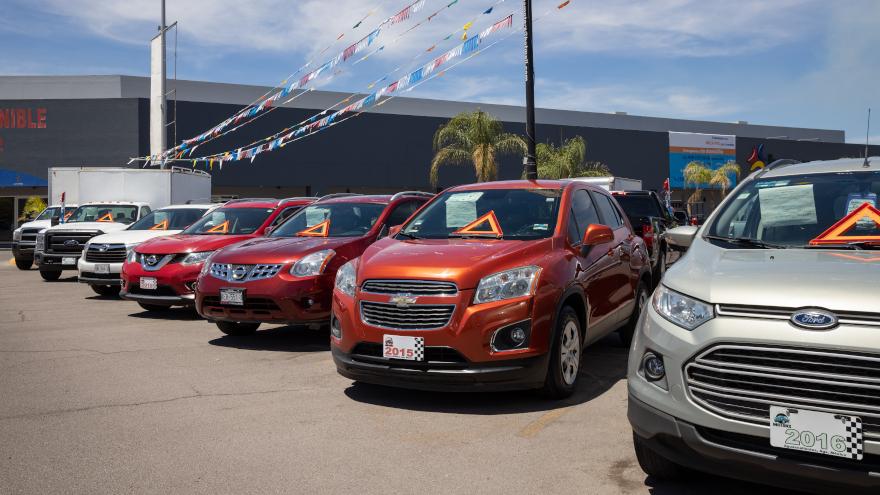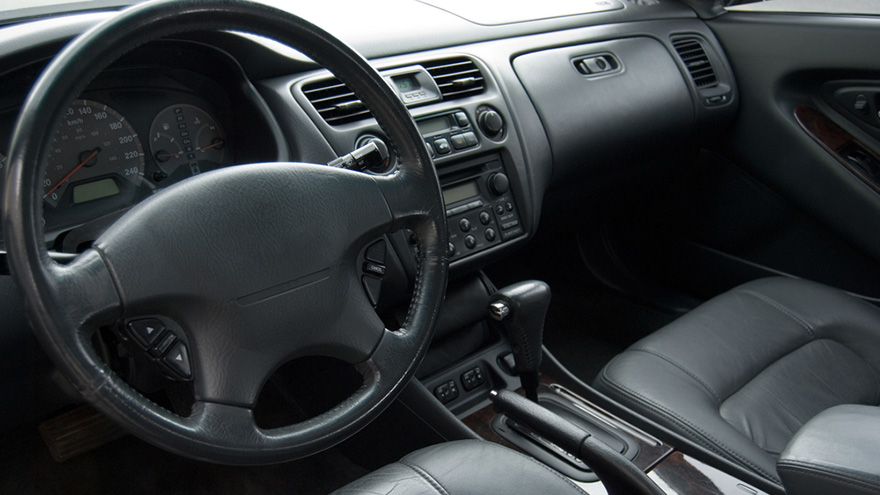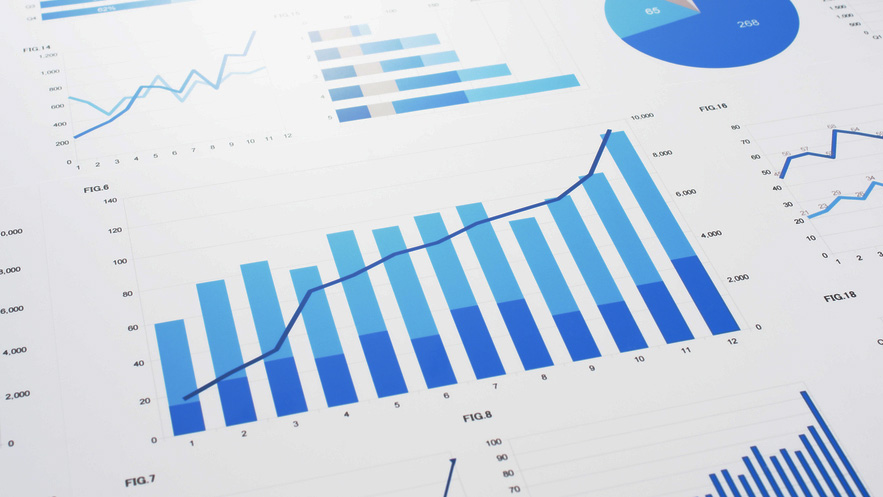According to research conducted by ValuePenguin, the states where people look to buy the oldest used vehicles are evenly split among the Midwest and West.
The insurance division of LendingTree pinpointed the Top 10 states and markets where consumers are seeking to take delivery of older models. Overall, researchers found that the average age of used vehicles people want is 6.47 years old.
The company discovered these trends by examining more than 240,000 auto finance inquiries for used vehicles on the LendingTree platform between January and July.
ValuePenguin determined the 10 states where people look to buy the oldest used vehicles and the average age of those units include:
1. Idaho: 7.98 years
2. South Dakota: 7.98 years
3. Wyoming: 7.71 years
4. Iowa: 7.67 years
5. Nebraska: 7.66 years
6. Kansas: 7.62 years
7. Montana: 7.52 years
8. New Mexico: 7.25 years
9. Indiana: 7.04 years
10. Oregon: 7.02 years
Researchers then shared the specific markets where potential buyers reside along with the average age of what they want to purchase:
1. Spokane, Wash.: 8.04 years
2. Boise, Idaho: 7.74 years
3. Wichita, Kan.: 7.71 years
4. Des Moines, Iowa: 7.52 years
5. Harrisburg, Pa.: 7.47 years
6. Ogden, Utah: 7.42 years
7. Omaha, Neb.: 7.39 years
8. Albuquerque, N.M.: 7.20 years
9. Knoxville, Tenn.: 7.17 years
10. Chattanooga, Tenn.: 7.14 years
“Independent of individual state factors, cars continue to get older. The average age of cars and light trucks has increased steadily for 20 years. New vehicles have become more expensive, and more durably built vehicles allow people to travel more miles before they get scrapped,” ValuePenguin auto insurance expert Divya Sangameshwar said in a report that included more data and is available via this website.
A research study by Global Market Insights made available this week indicated that the worldwide used-car market is expected to surpass $2 trillion by 2028
Firm experts said a substantial increase in urbanization supported by vehicle ownership trends is likely to augment the industry growth.
Global Market Insights mentioned in a news release that the worldwide demand for hybrid/electric vehicles also is increasing due to stringent emission standards and regulations as well as a growing demand for low or zero-emission models.
“Governments of several countries offer purchase incentives and tax breaks for hybrid vehicles including HEVs and PHEVs, thereby promoting the sales of used cars,” the firm said in the news release.
“The market for HEV is increasing led by the high sales volume in the U.S., Japan, and China. Improvements in EV charging infrastructure are spurring additional investments by used car market players to provide high-quality used cars,” the firm added.
Global Market Insights went on to point out that the global used-car market is experiencing growth because of the various benefits of buying vehicles from franchised dealers.
“Increased investments in the restoration and maintenance of used cars by franchised car dealers are expanding their market shares,” the comapny said.
The complete research report can be acquired via this website.
Earlier this month, I noted how retail used vehicle sales in April might be a stage-setter for the remainder of the year. Like many dealers, I was hopeful that sales would take a positive turn — that a shower of sales in mid-to late April might bring flowers in May and beyond.
Well, it’s starting to look like we won’t see the “bounce” in retail sales everyone hoped would materialize. The hope was based in part on the fact that, as of a few weeks ago, a smaller share of consumers had received their federal tax refunds than usual. The arrival of those delayed checks, the thinking went, would hopefully cause retail sales of used vehicles to pick up.
Unfortunately, as many dealers know, retail sales of used vehicles haven’t increased substantially as April has unfolded—despite the arrival of more (and larger) Internal Revenue Service refunds than the same time last year. The upshot: Tax refund dollars are out there but they don’t seem pointed toward used vehicles.
The end result is that while retail demand remains relatively strong, dealers are experiencing a far more muted spring selling season than many expected this year. At Cox Automotive, analysts had projected April to be one of the best months of 2022 for retail sales of used vehicles. Today, analysts are revising their retail sales forecasts for the calendar year. Cox Automotive chief economist Jonathan Smoke believes we’ll see 500,000 fewer retail sales of used vehicles this year compared to last year.
As I’ve talked to dealers in recent days, I’ve shared how the current rates of retail sales, combined with broader economic factors such as rising inflation and higher living costs overall, suggest the time has arrived for more stocking and pricing discipline. At some stores, inventory investment fundamentals have gone soft as dealers have enjoyed two consecutive years of record-setting used vehicle sales and profits.
Across the country, dealers have a roughly 45-days’ supply of used vehicle inventory on their lots. Given the current conditions, I’ve been reprising my guidance that dealers should balance their inventories to their rolling 30-day total of retail sales. If you’re long on inventory right now compared to your rolling 30-day retail total, the time has arrived when tempering acquisition efforts, particularly in the higher-cost sourcing channels like auctions, makes good sense. It’s also a time that when you need to make doubly sure that your appraisers and buyers understand exactly how much your inventory needs the vehicle they’re considering.
The current conditions also suggest that dealers will need to mind their retail used vehicle pricing more earnestly than they’ve needed to in the recent past. A few months ago, some anticipated that a spring sales bounce would cause price appreciation in the wholesale and retail markets — the best of both worlds for dealers.
While we’ve seen some appreciation in the wholesale market in recent weeks (about 2%, roughly half of typical spring value appreciation), retail prices aren’t moving up in any significant way. Some anticipate retail prices will trend down as dealers realize spring buyers aren’t coming as quickly, or in the numbers, that they expected.
Perhaps the best news of the current used vehicle market environment is that we’ve all been here before. We know how to optimize used vehicle profitability when market conditions aren’t fully in our favor and margin compression risks are on the rise. It’s time to restore your focus on inventory investment management fundamentals to stay ahead of what appears to be a softer used vehicle market.
Dale Pollak is chairman and founder of vAuto and this commentary originally appeared on his blog.
Used-vehicle market resiliency is likely to be on display again this month, as one projection has February retail sales improving from the opening month of 2022.
Meanwhile, if franchised stores actually have new models to retail, they’re generating grosses that sometimes only their used departments can.
TrueCar said on Friday that used-vehicle sales this month are expected to reach 3.2 million, which would be down 9% from a year ago but 8% higher versus January.
TrueCar also predicted that the average ARP on used vehicles financed in February would be 7.4% with average contract terms stretching out to 70 months.
When in comes to new models, excluding fleet sales, TrueCar is expecting U.S. retail deliveries of new cars and light trucks to be 935,604 units, which would be down 12% from a year ago and up 4% from January.
“After a volatile 2021 in terms of pricing and supply, this month we’re seeing signs of stability,” TrueCar lead industry analyst Nick Woolard said in a news release. “From a supply standpoint, we’re seeing industry new listings roughly in line with January.
Additionally, from a pricing standpoint, things appear to be settling into a new equilibrium with the smallest month-over-month average price change in at least a year,” Woolard continued.
TrueCar senior vice president of OEM solutions Valeri Tompkins elaborated about the financing component of the new-vehicle market.
“This month we are seeing the lowest levels of leasing since the onset of the pandemic when there was a proliferation of extended term loans,” Tompkins said in the news release. “Historically, leasing has been the go-to option for shoppers looking for the lowest payment but over the past year we have seen that shift.
“For shoppers configuring vehicles on TrueCar, we’re now seeing lower average payments for 72-month loans than 36-month leases.”
Continuing the theme, a joint forecast from J.D. Power and LMC Automotive indicated new-vehicle retail sales for February are expected to decline when compared with February of last year.
The firms said retail sales of new vehicles this month are expected to reach 922,100 units, a 5.7% decrease compared with February 2021.
Thomas King is president of the data and analytics division at J.D. Power.
“With retail inventory on pace to finish a fourth consecutive month below 900,000 units and ninth consecutive month below one million units, the new-vehicle supply situation is not displaying signs of near-term improvement. Therefore, sales in February are being determined by the number of vehicles delivered to dealerships rather than reflecting actual consumer demand,” King said in another news release.
When franchised dealers have those new units to retail, King shared why they might be sharing high-fives when those models roll over the curb.
“Dealers also continue to benefit from high transaction prices with total retailer profit per unit — inclusive of grosses and finance and insurance income — being on pace to reach $5,023, an increase of $2,837 from a year ago and the fifth consecutive month above $5,000,” King said.
“The gains in per-unit profit are offsetting the drop in sales volume as the total aggregate retailer profit from new-vehicle sales is projected to be up 117% from February 2021, reaching $4.6 billion,” he continued.
King also provided more J.D. Power data that reflected the distinct connection the new- and used-vehicle markets have.
“Record new-vehicle prices are being supported by exceptionally strong used-vehicle prices, as new-vehicle buyers benefit from more equity on their trade-in vehicles,” King said. “The average trade-in equity for February is trending towards $9,663, a 93.0% increase of $4,657 from a year ago.”
Over at Cox Automotive, analysts there said new-vehicle sales in February are expected to reach 1.08 million units, a drop of 11% compared to February of last year.
Cox Automotive senior economist Charlie Chesbrough recapped in another news release that new-vehicle sales volume has been averaging just above 1.05 million each month since last August, and February is not expected to buck the trend since inventory levels are not showing significant improvement.
Chesbrough pointed out that new-vehicle inventory is now 62% below last year, and vAuto Available Inventory data showed that available supply declined last week after rising for many weeks.
“The market is heading into a very interesting period,” Chesbrough said in the news release. “With low supply and low sales volume, and no tangible market change expected, a big decrease in the sales pace — a sizable drop in the SAAR — is likely in the offing for next month.
“In the winter, when low sales volumes are expected, seasonal adjustments can result in a relatively strong SAAR, as we have in January and February. But come spring, when sales are expected to be much higher, the SAAR will look particularly weak. Without a big jump in inventory, March’s SAAR is going to show a significant decline,” he went on to say.
King had a similar line of thinking about what could happen in March.
“What we’re seeing in February — sales being constrained by available inventory — is expected to continue in March,” King said. “The underlying question is which manufacturers will have the ability to produce enough vehicles to increase inventory levels. Ongoing supply chain disruptions, along with near-term announcements of production outages by several manufacturers, mean that the aggregate inventory situation is unlikely to change in March.
“For some manufacturers, the situation may deteriorate. This likely means that prices and per-unit profitability for retailers and manufacturers will likely remain healthy,” he added.












